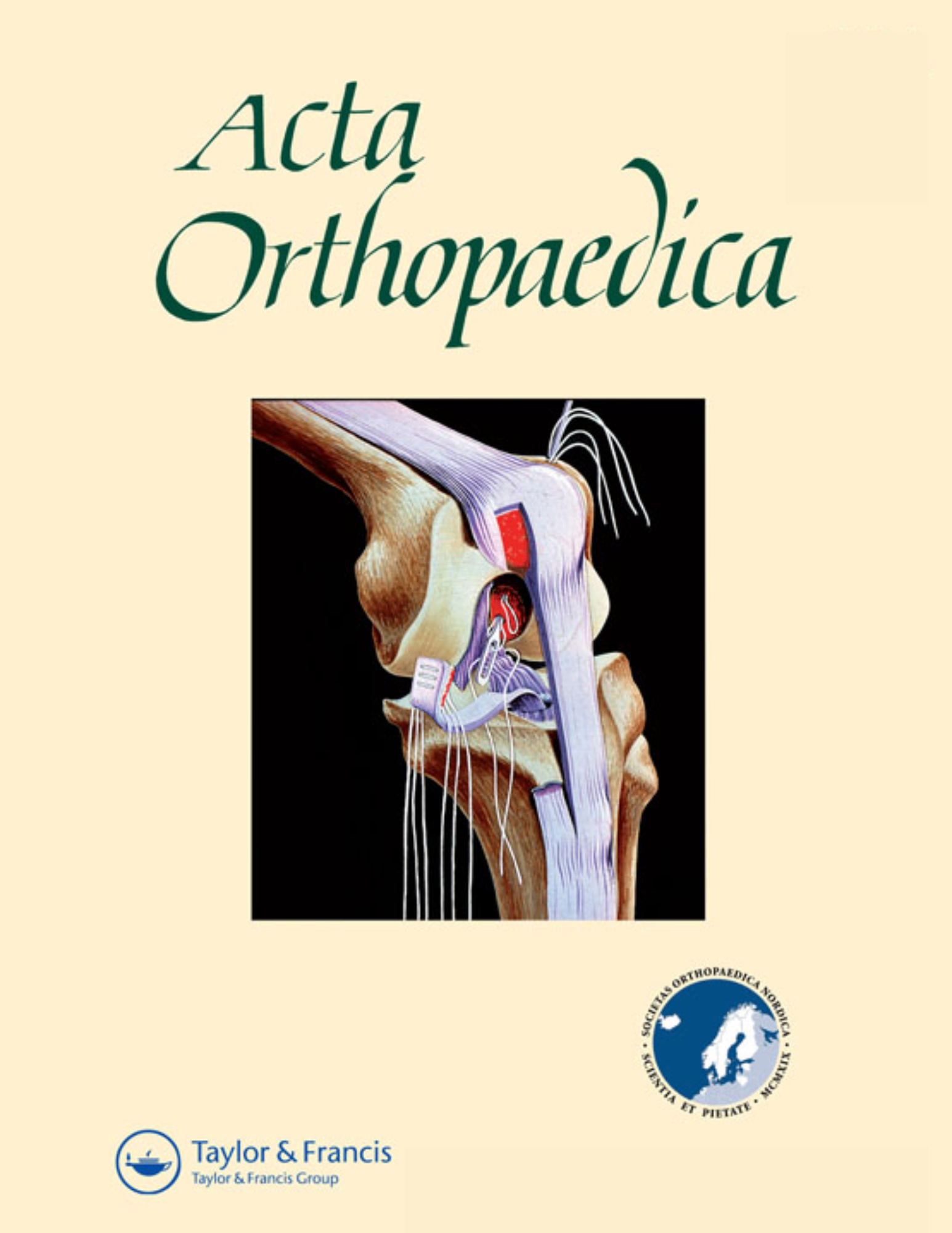
Tibial components for primary knee osteoarthritis

Tibial components for primary knee osteoarthritis
Superior fixation of pegged trabecular metal over screw-fixed pegged porous titanium fiber mesh: A randomized clinical RSA study on cementless tibial components
Acta Orthop. 2011 Apr;82(2):177-86.Did you know you're eligible to earn 0.5 CME credits for reading this report? Click Here
Synopsis
50 patients were randomized to receive either high-porosity trabecular metal (TM) tibial components or low-porosity titanium pegged porous fiber-metal (Ti) components in the treatment of primary osteoarthritis of the knee. This study was performed to compare the stability of these cementless implants. The results indicated that TM tibial components migrated less than the Ti components at 1 and 2 year post-surgery follow-ups.
Was the allocation sequence adequately generated?
Was allocation adequately concealed?
Blinding Treatment Providers: Was knowledge of the allocated interventions adequately prevented?
Blinding Outcome Assessors: Was knowledge of the allocated interventions adequately prevented?
Blinding Patients: Was knowledge of the allocated interventions adequately prevented?
Was loss to follow-up (missing outcome data) infrequent?
Are reports of the study free of suggestion of selective outcome reporting?
Were outcomes objective, patient-important and assessed in a manner to limit bias (ie. duplicate assessors, Independent assessors)?
Was the sample size sufficiently large to assure a balance of prognosis and sufficiently large number of outcome events?
Was investigator expertise/experience with both treatment and control techniques likely the same (ie.were criteria for surgeon participation/expertise provided)?
Yes = 1
Uncertain = 0.5
Not Relevant = 0
No = 0
The Reporting Criteria Assessment evaluates the transparency with which authors report the methodological and trial characteristics of the trial within the publication. The assessment is divided into five categories which are presented below.
3/4
Randomization
3/4
Outcome Measurements
4/4
Inclusion / Exclusion
4/4
Therapy Description
4/4
Statistics
Detsky AS, Naylor CD, O'Rourke K, McGeer AJ, L'Abbé KA. J Clin Epidemiol. 1992;45:255-65
The Fragility Index is a tool that aids in the interpretation of significant findings, providing a measure of strength for a result. The Fragility Index represents the number of consecutive events that need to be added to a dichotomous outcome to make the finding no longer significant. A small number represents a weaker finding and a large number represents a stronger finding.
Why was this study needed now?
There is currently insufficient evidence regarding the efficacy of high-porosity double-pegged trabecular metal versus low-porosity titanium pegged fiber-metal as a cementless tibial component for patients suffering from primary knee osteoarthritis.
What was the principal research question?
Does a high-porosity double-pegged trabecular metal component tibial lead to improved fixation as compared to a low-porosity titanium fiber-metal tibial component in patients undergoing intervention for primary knee osteoarthritis, when measured two years post-operatively?
What were the important findings?
- Migration of the trabecular (TM) component was significantly less than the low-porosity titanium component. This result was significant at both the one year (p = .01) and two year follow-up (p = .004).
- AKSS reports of both groups indicated reductions in pain at 2 year follow-up compared to preoperative scores, with 14/22 in the TI group and 17/23 in the TM group, reporting no pain.
What should I remember most?
The trabecular metal component was superior to the low-porosity titanium component in terms of total migration, measured two years postoperatively.
How will this affect the care of my patients?
This study provides support for the use of porous tantalum as an alternative to traditional implants. However, the small sample size of the study and the unknown results of longer term follow up should be considered.
Learn about our AI Driven
High Impact Search Feature
Our AI driven High Impact metric calculates the impact an article will have by considering both the publishing journal and the content of the article itself. Built using the latest advances in natural language processing, OE High Impact predicts an article’s future number of citations better than impact factor alone.
Continue



 LOGIN
LOGIN

Join the Conversation
Please Login or Join to leave comments.